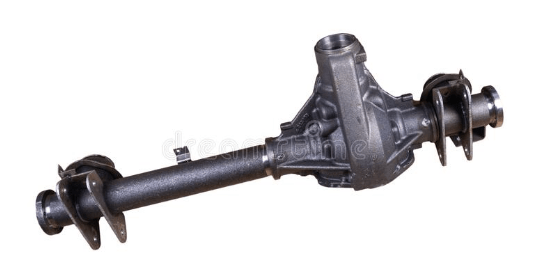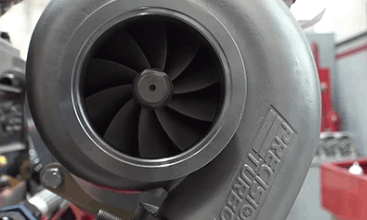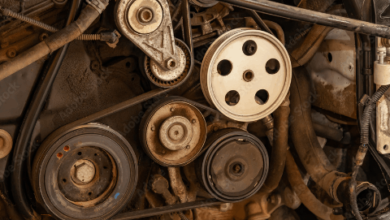Front Differential – How It Works? Problems, Solutions and More
The gear systems and drivetrain systems are very important parts of vehicles. Front differential is also a very important part. Here you can find detailed information about these parts and you will know how they work in general. Also, you can find information about the general problems maintenance, and repair costs.
What is Front Differential?

In the most basic terms, the front differential is a bevel gear mechanism that distributes the power of the engine that comes through the transmission to the wheels. The power comes as a rotating shaft from the transmission. And this rotating shaft connects to the front differential gear system. The angled bevel gear system distributes the power to each wheel. This is the main duty and the structure of the front differential.
Front differential applications are generally found in cars that have AWD, front-wheel drive, or 4WD. So these are the systems that the front wheels receive the power.
If we talk about the general functions of this part;
- This system increases the handling of the vehicle. It provides the turning of the front wheels at different speeds while you turn the steering wheel. Imagine that you turned your steering wheel to the right. The right front wheel must rotate lower than the left wheel. And the front differential system makes it possible to enhance the handling and stability of the car.
- Also, the gear ratio of the front differential is a very important thing. For most passenger cars, the gear ratio of this part is 4.33/1. This means, once the shaft coming from the transmission rotates 4.33 tour and the wheels rotate 1 yours. With increasing this rate, the torque of the car increases, but the speed decreases. So, it is important information if you want to make adjustments to the differential.
- Another important duty of this part is that it provides the limited slip of the front wheels when you give excessive power. It adjusts the amount of power that comes to the wheels when the wheels start spinning. This is a very important thing for the traction control of the car that you have.
Types of Front Differential Systems
Also, some different types and systems are used in different vehicles.
- Open-differential: This is one of the most common types of the front differential. The most important feature of this differential is the traction control between the front wheels. For example, when one wheel needs more traction than the other one, the open differential system adjusts the power by taking from another wheel to the wheel that requires power. In general, most passenger cars with FWD use this application.
- Locking differential: This is also another type of differential that you can find in off-road vehicles. The difference of this system is, it provides an equal amount of power to each wheel, unlike the open-differential. It can be useful for hard terrains such as rough and muddy terrains.
- Automatically locking differentials: This type of differential is the combination of the differential systems that we explained above. It is making the traction control like the open-differential systems. But when it needed to have maximum traction in hard situations, it automatically locks and gives the maximum power to the wheels like the locking differentials.
- Torque vectoring systems: They are the high-end differential systems that we can find in high-performance cars in general. The traction control is much more accurate and specific according to the different circumstances.
What are the Symptoms of Bad Front Differentials
You may have problems with these systems. In general, these gear systems are designed to withstand all over the car’s lifespan. But, in some circumstances, you can have problems with these applications. And these are the general symptoms that you will feel.
- Noises: If there is a howling and grinding sound coming from the front side of the car while you are running your car, you may have a problem. Once you accelerate the car, the sounds become higher pitch. But when you stop the car but the engine is idling, you will not hear the noise. While you are turning your car, you can hear the sounds also.
- Vibrations: If there is a water leak to the gear system and low differential oil inside the system, the roıgh rotation of the differential will cause vibrations while you are driving your car.
- Excessive tire wear: As we explained above, the most important duty of the transmission is to adjust the turning rates of wheels while you are turning your car. If the differential does not work properly, you will notice that you have excessive wear on your wheels. And these wears will not be equal.
- Handling problems: Also if there is a problem with the traction control of your car, you will have problems such as hard handling.
- Leaking oil from the front differential: The differential case holds the differential fluid inside the casing. So, if there is an oil leak from your differential, this means you have a problem with the casing seals and casing. And this can cause excessive wear on gears.
- Burning smell: Actually, the reason for the burning smell can have different reasons. But if the differential oil is low inside the differential system, the wear can cause bad smells.
General Causes of the Problems with Front Differential
Also if you know the general causes of the front differential problems, you may take action to save your differential system. And it will be much easy to save your differential system to be replaced.
In general lack of maintenance can cause different problems with the different systems on your vehicle. So, with regular maintenance, you can take care of the situation without any problem.
The first cause is driving your car for lots of miles without maintenance. You need a regular maintenance schedule to prevent these kinds of problems. Once you bring your car to maintenance, they will check the oil inside the differentials. And if there is a low oil, they will add oil to prevent problems.
So as you understand that most of the problems with the front differential take place because of the lack of oil inside the differential. This will cause wear and eventually problems.
If there is damage to the differential casing, you can also have problems with the low oil levels. And this can cause problems.
The differential systems consist of a bunch of gear systems that require a specific amount of oil every time. And there are no complex causes as you understand.
Replacement Prices of Front Differential Systems
The replacement price of these parts may change according to different factors. The most important factor here is the model and brand of the car. For example, if you want to change Nissan Altima front differential systems the price will not be the same as the BMW X5. But if we need to give a specific range of price, you will need to pay around $1000-$4000 for all costs.
The parts themselves will be around $800-$1000 and other costs are the labor costs. Because it requires a hard and expert/laborious process to change. You will need special tools and special knowledge to successfully install the front differential system. If you do not have a good amount of knowledge and experience in car mechanics, attempting to replace yourself will not be a good idea.
Some Knowledge about Replacement
As we stated above, it requires a very good amount of experience and ability for car mechanics. And also the technique profoundly changes according to the different car brands and models. But these are the general things that were made in the replacement.
First of all, the car must be raised. In general, normal mechanical or hydraulic lifters are not sufficient for this job. You will need a full hydraulic lifter to lift the car completely. Because the sizes of the parts and gears are bulky equipment.
Before taking the old system, they will drain the oil from the drain plug that the differential case has. And you need to remove the axles that connect the wheels to the differential. This process may include the removal of the wheel hub, brake lines, and systems also.
If there are electromechanical systems that are attached to the differential, you need to remove all the electrical and hydraulic connections and actuators from the differential. As you can understand that the model and type of the front differential have a profound effect on the process.
There will be fasteners and bolts that are holding the differential in place. You need to securely remove these applications. And then you can love the differential system carefully.
You need to install the new differential and install all the components to their places back. Install all the electrical and hydraulic systems that are attached to the system. And attach the axles and brake systems. Make sure that you made all the connections well.
After that, you can refill the differential with the appropriate amount of oil. And run the engine and run the car for a while and test the brake systems, turning, and handling if there is a problem.
Can I Drive Without a Front Differential?
No. You can not. Because the front differential is the intermediate drivetrain element that transmits the power coming from the engine to the front wheels. So, without the front differential, you can not run your car.
What Happens If Front Differential Fails?
You simply can not drive your vehicle. Because the power does not go to the wheels. But the immediate failure of front differential systems is not generally common. You will feel the symptoms above and if you ignore these symptoms, the symptoms will increase. And after a level, you will probably feel to bring your car to a service or mechanic to take care of the situation.
Is It OK to Drive with a Bad Differential?
You can drive with a bad differential. Probably you will be able to go between different points without any problem. But if you continue to ignore the problems that you will have the total replacement costs will increase with the increased problems.
Conclusion
So, this is one of the most comprehensive guides about a front differential system that you have in your car. And we wish you found the exact answer that you are looking for for this topic.
If you have additional comments and questions, please leave them below. Your precious feedbacks are very important to us.
Check the other topics about car mechanics;
Timing Cover Gasket – What is That? How to Choose?
Timing Belt Tensioner – Use, Types and Troubleshoot



